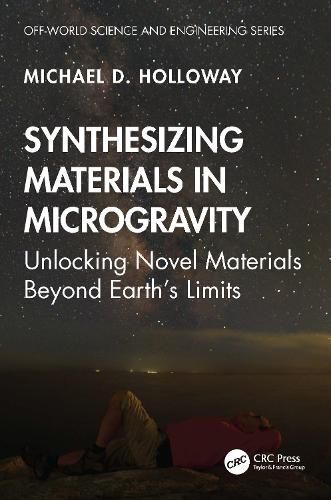Readings Newsletter
Become a Readings Member to make your shopping experience even easier.
Sign in or sign up for free!
You’re not far away from qualifying for FREE standard shipping within Australia
You’ve qualified for FREE standard shipping within Australia
The cart is loading…






Synthesizing Materials in Microgravity: Unlocking Novel Materials Beyond Earth's Limits reveals how space-based environments unlock breakthroughs in material design by eliminating Earth's gravitational constraints. On Earth, gravity induces convection, sedimentation, and pressure gradients that compromise material quality during crystallization, solidification, polymerization, and sintering. In microgravity, such as aboard the ISS, these forces are minimized, enabling precise control of atomic arrangements, phase transitions, and microstructure formation. The result: materials with superior structural, electrical, and thermal properties once thought unattainable.
This book presents cutting-edge experiments from space, bridging theoretical foundations with real-world case studies across alloys, ceramics, semiconductors, and polymers. With high-quality visuals, it demystifies complex phenomena and highlights future commercial and scientific frontiers. A vital resource for scientists, engineers, and innovators seeking new material horizons.
$9.00 standard shipping within Australia
FREE standard shipping within Australia for orders over $100.00
Express & International shipping calculated at checkout
Stock availability can be subject to change without notice. We recommend calling the shop or contacting our online team to check availability of low stock items. Please see our Shopping Online page for more details.
Synthesizing Materials in Microgravity: Unlocking Novel Materials Beyond Earth's Limits reveals how space-based environments unlock breakthroughs in material design by eliminating Earth's gravitational constraints. On Earth, gravity induces convection, sedimentation, and pressure gradients that compromise material quality during crystallization, solidification, polymerization, and sintering. In microgravity, such as aboard the ISS, these forces are minimized, enabling precise control of atomic arrangements, phase transitions, and microstructure formation. The result: materials with superior structural, electrical, and thermal properties once thought unattainable.
This book presents cutting-edge experiments from space, bridging theoretical foundations with real-world case studies across alloys, ceramics, semiconductors, and polymers. With high-quality visuals, it demystifies complex phenomena and highlights future commercial and scientific frontiers. A vital resource for scientists, engineers, and innovators seeking new material horizons.